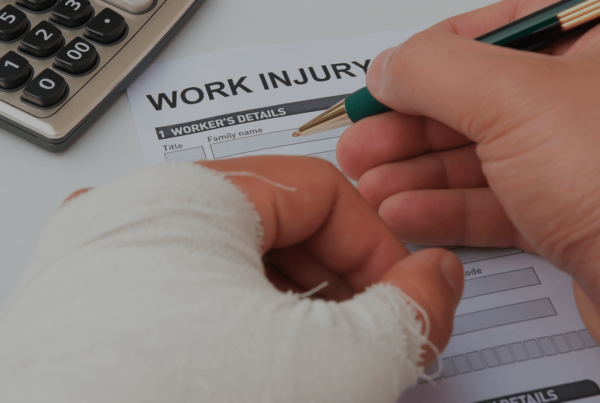What comes to mind when you think of physical therapy? If you’re like most people, you picture an elderly person doing specific exercises to recover from knee-replacement surgery, or a pro athlete working with their team’s medical staff after a nasty injury.
It’s true that physical therapy plays a huge role in recovering from surgery or injury—but the benefits of physical therapy stretch far beyond this narrow band of examples. PT can affect nearly every inch of the body, and that means it can be used to treat everyday medical issues that are far less dramatic than what usually comes to mind.
14 Everyday conditions that can benefit from physical therapy
While prominent examples might make you think physical therapists are primarily focused on knee ligaments and rotator cuffs, their training covers much more.
It’s because of this extensive training that physical therapists have the medical expertise it takes to treat a wide variety of conditions like these.
1. Vertigo
Vertigo is a sensation of dizziness or spinning that commonly happens when “crystals in the inner ear dislodge and create a miscommunication between your brain and body,” says Dr. John Lyons, owner of Lyons Physical Therapy. PT can correct this in just a few sessions by using a method called the Epley Maneuver, in which patients turn their heads a specific way to return these calcified ear crystals to where they belong.
2. Headaches
Millions of people suffer from migraines and headaches, but many don’t realize that PT could help ease their pain. Headaches that do not respond to medicine or are on one side of the head can actually stem from your upper cervical spine. While this may not be the most common root cause of headaches, physical therapists can treat this issue by locating the joint that’s causing problems and help return it to its proper positioning.
3. Jaw Pain
Jaw pain is often caused by a condition called TMJ, in which the jaw becomes out of alignment and causes pain—or even lockjaw. By treating the neck and jaw joints, motor control of the jaw, and the muscles which help you to chew, patients can reach full resolution of this condition within a handful of treatments.
4. Balance problems
A variety of conditions can cause trouble balancing, including Parkinson’s Disease, neurological conditions and car accidents. PT may not be able to fully cure these conditions, but it can relieve some of the imbalance patients experience. Physical therapists can help patients regain proper orientation to midline. Restoring an individual’s balance restores them to a higher quality of life.
5. Back Pain
Most people experience some form of back pain in their lifetime. Physical therapists treat back pain by finding the root cause of your back pain so you can work on preventing this pain from returning. Physical therapists can use massage, stretching exercises and posture adjustments to improve back pain.
6. Urinary Incontinence
Physical therapy can be used to treat pelvic floor problems, such as urinary incontinence, in both men and women. Training the pelvic floor to work during all activities, like getting back to running, playing sports, weight lifting or even sneezing, is important. In addition to incontinence issues, PT can also help with other pelvic floor conditions such as painful intercourse or muscle weakness after pregnancy.
7. Bad Posture
Bad posture can negatively affect your mobility, cause back pain and even slow down your digestion! Physical therapists can identify the cause of their patient’s poor posture, from improperly lifting heavy items to the increasingly common “tech neck” that’s caused from looking down at screens. Then they can assign exercises and stretches designed to return those muscles to their proper position, allowing patients to stand tall again.
8. Concussions
Following a head injury from a car accident or sports, PT can play a vital role in the management and treatment of concussions as well as more severe brain injuries. A physical therapist will choose a treatment based on their patient’s individual concussion injury and develop a plan to gradually build up their tolerance to stimuli that can be triggering, like bright lights or rapid movement.
9. Plantar Fasciitis
Plantar fasciitis is heel pain caused by stress, tears or inflammation of the plantar fascia ligament. While other treatments focus on reducing pain through the use of ice or medicine, PT can improve the root cause of this condition. The plantar fascia ligament can be stretched and strengthened with specific PT exercises, allowing it to become more flexible and reduce stress and pain.
10. Arthritis
Arthritis is a common condition that causes painful swelling of joints. Thankfully, PT can make a difference. Passive movements and stretches to a joint can help ease arthritic pain that is caused by bone grinding on bone. Resistive strength training movements can also build muscle around the joints, which helps stabilize and support them.
11. Post-operative Care
PT is necessary for post-op care after many types of surgeries, not just things like knee or hip replacement. As your body works on healing itself, muscles can become weak and tight. For example, many patients require PT after an appendectomy. Even though this is a pretty non-invasive surgery in your abdomen, PT can help make sure that as you heal, excess scar tissue doesn’t form and your abdominal stay strong.
12. Carpal Tunnel Syndrome
Carpal tunnel syndrome is a lurking fear for anyone who uses their hands for repetitive movements, such as typing, woodworking or knitting. Activities like these place stress on a nerve in the wrist, leading to pain, tingling and numbness in the hand. PT is one of the only treatments for carpal tunnel that doesn’t involve surgery. Physical therapists can provide specific exercises to reduce the strain on the nerve that’s involved in this syndrome.
13. Pediatric Developmental Delays
Pediatricians are on the lookout for children to reach developmental milestones around certain ages, such as walking around 12 months. Sometimes children fall behind in their developing motor skills, and physical therapists are there to help. A pediatric physical therapist can evaluate a child’s motor skills and provide exercises and activities that are both fun and designed to help growing children reach their full levels of physical mobility.
14. Injury Prevention
The best time to visit a physical therapist is often before an injury occurs! The impact on our country’s health and overall healthcare cost would be extraordinary if physical therapists were used as a first line of preventative medicine. We advocate for yearly movement screenings for our patients in order to prevent injuries from occurring in the first place. By discussing risk factors and educating patients about relevant stretches and exercises, preventative PT can save patients from future injuries.





